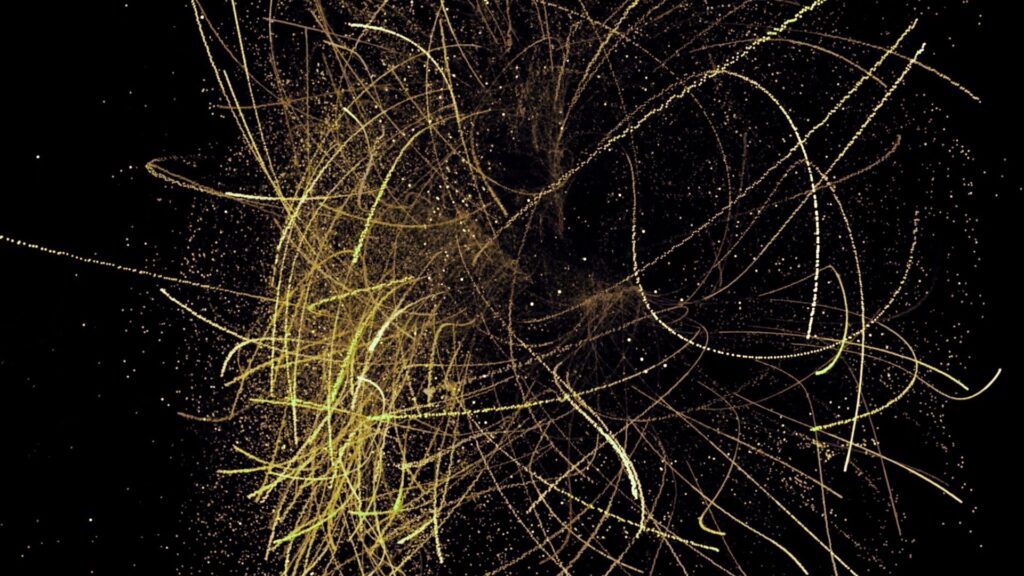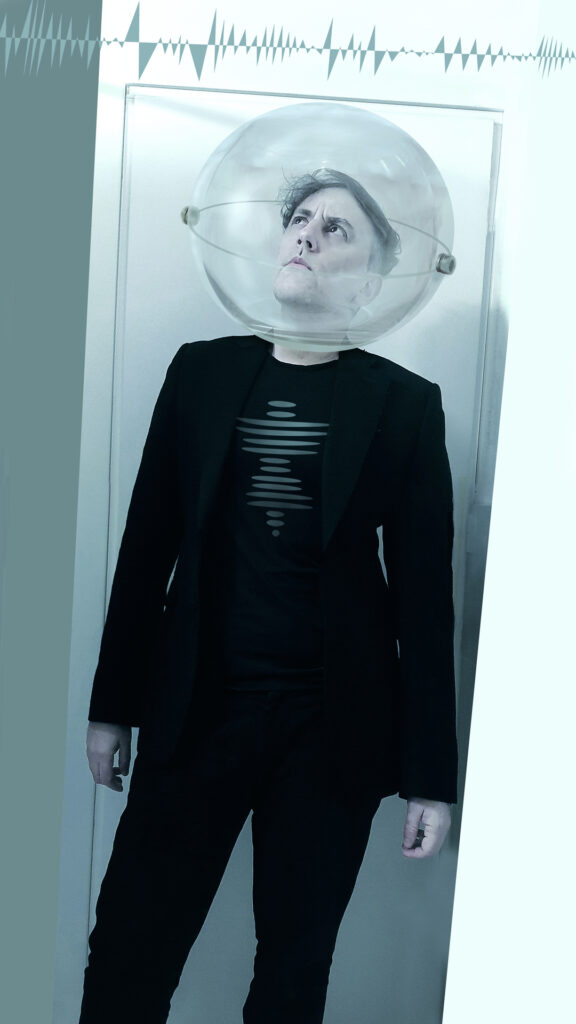Title of the exhibition: HYPERCONNECTIONS
Artist: Alessandro Zannier
Type of art: Painting, Installation, Video
Period: 3 June – 7 July 2023
Vernissage: 2 June 2023, 18:00 – 21:00
Title of the exhibition: HYPERCONNECTIONS
Artist: Alessandro Zannier
Type of art: Painting, Installation, Video
Period: 3 June – 7 July 2023
Vernissage: 2 June 2023, 18:00 – 21:00
 Alessandro Zannier, an Italian artist with an international career, already renowned for double participation in the Venice Biennale (Architecture 2021, Art 2022), is now taking Berlin by storm by participating in the biennial ‘Latitudes of Art’ – curated by Virginia Monteverde – which will open its doors at Kunsthaus Bethanien on the very day after the opening of his solo exhibition HYPERCONNECTIONS at the Luisa Catucci Gallery. 9A double exhibition for the Italian artist, not by chance!
Alessandro Zannier, an Italian artist with an international career, already renowned for double participation in the Venice Biennale (Architecture 2021, Art 2022), is now taking Berlin by storm by participating in the biennial ‘Latitudes of Art’ – curated by Virginia Monteverde – which will open its doors at Kunsthaus Bethanien on the very day after the opening of his solo exhibition HYPERCONNECTIONS at the Luisa Catucci Gallery. 9A double exhibition for the Italian artist, not by chance!
Zannier’s double Berlin actions create a tangible connection between three distinct artistic realities: Luisa Catucci Gallery, Virginia Monteverde, and Zannier’s mother gallery, ARTandide in Verona. Three realities which are sharing a similar vision of art, recognizing its role as an instigator for fundamental reflections to the implementation of a better future.
Zannier is an atypical conceptual artist, who straddles – and with equal intensity – between visual arts and electronic auteur music – this one under the pseudonym Ottodix. In recent years his artistic practice has revolved around precise concepts inspired by physics, astronomy, Anthropocene, geo-history, and environmental issues. This démarche artistique makes him one of the protagonists of what is defined as “Ethical Art”, i.e. art that is considered both a valid tool for making sense of the paradoxes and contradictions of contemporary society, and a key to open-mindedness, making it one of the determining factors in achieving emancipation and balanced, ecological and solidarity-based social change.
The HYPERCONNECTIONS exhibition at the Luisa Catucci Gallery opens with a cycle of Zannier’s pictorial works, selected from his “Hyperobject” series, representing the generated translation into sound and 3D animation of environmental big data.
The subjects are paintings of individual frames of these digital animations, created to immortalize man in this unprecedented guise of a “swarm of phenomena” on a vast space-time scale, only now visible thanks to technology.
Some of these canvases are preliminary studies based on the neural connections of the brain. Studies used to take a deep look into the 3D animations of the big data, to best introduce the concept of ‘hyper global connection’, the network of human connections. Migratory routes, air, naval, energy pipelines, web, satellite, economic networks, and so on, are now enveloping us into a sort of single gigantic organism – or ‘hyper object’ – in which everything that happens spreads instantaneously from local to global.
Strips of iridescent colors on an abysmal black background, Zannier’s canvases – with their interesting blend of flavors between cyberpunk and neo-liberty – confront us with important ecological problems such as the state of the oceans, where the sound waves generated by the movement of ships constitute acoustic pollution that is extremely harmful to flora and fauna. Not to mention the damage caused by plastic waste that has given shape to new monstrous realities such as the Pacific trash vortex.
Works that reveal an unprecedented aspect of the “Hypermensch”: his being a kind of hyper-object, a hyper-tool, and at the same time maker and creation of the multitude of contemporary events, choices, and historical contexts. Thus unhinges the concept of the individual “I”, highlighting instead the unconscious collective dynamic of what Zannier defines as the human swarm-colony on Earth.
The paintings will be accompanied by two video works: “Toxic Aurora” and “Hidra”.
“Toxic Aurora”, exhibited for the first time at the Italy-Sweden biennial at the Palazzo Ducale in Genoa in 2022, presents an aurora borealis created with the flow of pollution data from Genoa provided by the CNR (Italian Research Institute)
“Hidra”, on the other hand, is created by mixing a series of environmental data on the oceans, water acidification, microplastics, and temperature rise, obtained in the Azores, Svalbard, and other parts of the Atlantic by marine robots from different research institutes.
Zannier collects Big Data thanks to its ENT installations, pairs of twin radiating/receiving light structures, which put Italy in dialogue with the different continents, cross-referencing Big Data on various types of pollution – such as data on the oceans – and human phenomena of serious environmental impact – like migration, deforestation, and food overproduction. Zannier has already installed four of them on as many continents: South America, Oceania, Africa, and Asia. The ‘ENT5 Berlin/Verona’ environmental data interchange tower between Berlin and Verona will represent Europe.
The numerical data collected – also thanks to the collaboration with Italian CNR and international research institutes – generate a 3D animation, including sound effects, representing the impressive ‘swarm of human making’, which is similar in appearance to many biological forms found in nature on other scales. Coincidence is not fortuitous, following the micro-macro theory proclaiming the interconnectedness of the whole.
The ENT5 Berlin/Verona, a data ‘bridge’ and now an ideological ‘bridge’, will initially be installed at the Bethanien for the Biennial curated by Monteverde, before joining the other works at Zannier’s solo exhibition at the Luisa Catucci Gallery.
Alessandro Zannier was born in Treviso in 1971, where he lives and works
He is a conceptual artist who works with music and visual arts, between physics, the environment, and big data with works and concerts with multimedia and popular slant. A graduate in painting from the Academy of Fine Arts in Venice, he has exhibited in international solo and group shows, including one at the Correr Archaeological Museum in Venice, three editions of the Biennale Italia Cina, between Beijing and Turin, the Curitiba Biennial (Brazil) and two consecutive Venice Biennials. Under the musical alias ‘Ottodix’, he has released 8 concept albums, a collection, and a biography and is considered a ‘cult’ project of Italian electronic wave music. In 2016/17 he presented in Beijing and Berlin the concept album “Micromega” on the scales of the magnitude of the matter of the cosmos and the visionary website www.micromegaproject.com considered a true web installation, a hybrid between illustrated “hyper album”, and encyclopedia of matter, which in 2022 became a well-known and debated case in the Chinese intellectual community as well as an important series of NFT. In 2020, he published ‘Entanglement’, an album on the correlation of phenomena on a global scale, and in 2021/22, the related, ever-expanding ‘ENT’ project consisting of a series of twin light installations around the world. Invited to the Venice Architecture Biennale 2021 – Italian Pavilion, the CNR ISMAR in Venice, the Venice Art Biennale 2022 – Cameroon Pavilion, and the University of Auckland, the project continues to collaborate with research institutes, universities, and museums and will continue until 2023, when it will have completed its 6 continental twinnings. Also in 2022, he realized his solo exhibition ‘MareMoto 4.0’ at the Galata Museo del Mare in Genoa, with works in dialogue with CNR ISMAR in Genoa and data collected by marine robots, and performed at the opening with musicians on the submarine ‘Nazario Sauro’. With the album ‘ARCA’, he is now on tour with a show between music, science, astronomy, environmentalism, and popularisation. Zannier has been chosen by the city of Venice as artist-in-residence DVRI 2023, with a diffuse exhibition made up of concerts, sound installations, and works on the theme of habitat, backup, and extinction, hosted by various institutions such as CNR ISMAR, the Venice Conservatory, the Bevilacqua La Masa Foundation, and Ca’Foscari University.
